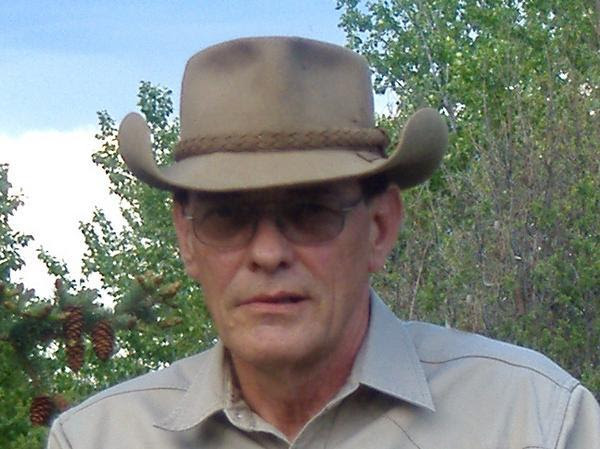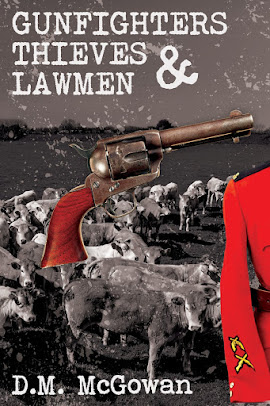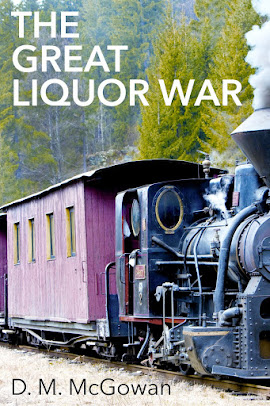With the small gold discovery on the west coast of Moresby
Island in 1850 the man who was the
Chief Factor for the Hudson’s Bay
Company, James Douglas knew that preparations should be made for a serious
invasion of “non-British.” By the time that invasion actually took place, in
1858 he had made some preparations and had been the HBC governor of their
Colony of Vancouver Island for seven years. When the British government took
over the colony they appointed Douglas the first
Governor of the Crown Colony of Vancouver Island.
With information from earlier gold rushes (California,
Australia and South
Africa) Douglas
implemented control measures for security and artfully disguised taxes to fund
infrastructure. Those expecting to register a gold claim were required to
report to Victoria to acquire a
mining license for five pounds or ten dollars. Then in 1857 he learned that
American miners where already working the Thompson River.
In the early weeks of 1858 Douglas had Captain James
Prevost of the Boundary Commission station his gunboat in the mouth of the
Fraser to issue and collect such licenses. Earlier in ’57 he had sent for
policemen and magistrates to maintain security and implement import duties.
As a result of his pre-planning funding for the rapid
expansion of facilities was not long in being implemented although it never did
catch up to actual expenditures. Those who wished to convert their gold to cash
or take gold out of the colony where required to pay a royalty. Gold
Commissioners in every area of gold discovery kept records of finds, claims and
their owners, production and conversion. When drovers began bringing livestock
into the colonies (originally Vancouver Island and British
Columbia and later amalgamated into one colony) there
was a charge of a dollar a head. The law was written in such a way that ten
years later, after Douglas had returned to Scotland,
those taking livestock out of the colony to the US
or Alberta also had to pay a
dollar a head.
The point is there was some money in the government coffers.
The first year, 1858, 25,000 miners worked the banks and
bars of the Fraser. Because the gold was so fine (a few large nuggets were
found but it was mostly dust), because security was so strict (enforced by
Royal Marines and Royal Engineers that year) many miners decided to try their
luck in Colorado or Montana.
The Fraser Valley War which cost the lives of at least 28 miners and several
natives was also not helpful in attracting return visits.
Those who did return wanted to go inland looking for the
more course gold or the “mother lode.” Due to the terrain and the lack of
horses or mules this exploration was accomplished by walking and carrying a
pack. If the colony was going to grow and find the gold that was surely there a
road must be built. If the merchants (and by 1859 there where many) in Victoria
and the new town of New Westminster expected to sell their wares they needed to
get them to the customer and thus a road was required. If settlement was to be
established, which was the long term goal of the British Colonial Office, road
construction must begin.
The first civil engineer for the colony was Walter Moberly.
He suggested a route that was eventually used but Governor Douglas insisted the
lower portions should make use of existing waterways.
Walter Moberly in later life
So what do you do when the boss ignores your arguments?
For the first few years the route to the interior was north
from the Fraser at Harrison Lake
to Port Douglas.Off the river boat and take the trail along the east of the
lake to “29 Mile House” where a river boat was supposed to take you to Port
Pemberton. From there another road led to Port Anderson where another boat
would ferry you to the east end of Lake
Anderson and Lilooet.
As the colonies civil engineer had expected, this route
proved to be a problem in many areas and particularly between 29 Mile House and
Port Pemberton which is actually two lakes of different levels. Attempts to
change the water levels didn’t work for very long.
In 1861 Walter Moberly formed a partnership with Charles
Oppenheimer and T.B. Lewis, merchants with business in Lytton and Yale. This
partnership controlled the financing and the distribution of contractors over
various assigned sections. Construction began in 1862 and the road went into Williams
Creek in 1864 using the north end
of the old “Overland” trail from 1859. The following
year (1865) the new section from Soda Creek to the present site of Quesnelle
and east to Barkerville was completed. This was similar to today’s highway
except the road turned south at Van Winkle (don’t bother looking for it, the
town is long gone.) then east and north through Richfield
into Barkerville. The section through Devil’s Canyon and into Wells from the North
West wasn’t done until much later, I believe in the
1880s.
A BC Express ("The BX") stage on the Cariboo Road on a dry day
A wagon train on the Cariboo Road
A famous view, since it was a postcard of the Cariboo Road and a freight wagon
Completion of the Cariboo Wagon
Road created a big change for everyone in the
colony. For the miner along Williams Creek
a pair of rubber boots carried in on someone’s back would cost him $75.00 in
1864 and he might not get them until the following year. Most removed their
boots and panned the ice cold streams in bare feet. A year later in 1865 there
was freight arriving every week or two and those same rubber boots where priced
at $25.00. By 1870 freight arrived almost every day and the boots were $9.00.
(Keep in mind that the relative worth of $9.00 is about
$160.00 in today’s cash)
The merchants were all happy with the opening of the road.
Those at the various gold fields could get items faster and cheaper. Those
distributing from New Westminster
or Hope could send more items faster and with less damage.
The government also achieved their primary goals and
established new traditions. They had more people going into the interior taking
more minerals and paying for the privilege. They had many more settlers
established, the first building roadhouses to serve travelers, settlement being
the long term goal. They also established a long standing tradition of not
paying the full price as had been agreed in the initial contracts. According to
Walter Moberly’s writings his partners broke even on their efforts to establish
the road but he took the brunt of the over cost which took him eight years to
pay. Oppenheimer and Lewis might not
have done so well had they not stayed the coarse and collected tolls once the
road was open.
Wright's Ranch at 127 Mile House
Deep Creek 161 Mile House
As for gold production that is still going on in BC. There
are several companies taking minerals of all description from BC Mountains.
There is even a relatively new company, Barkerville Mining Ltd. that is trading
at about .35¢.
Mr. & Mrs. John Bowron
John Bowron was one of the “Overlanders” who walked to the
Cariboo from Upper Canada (Ontario)
in 1862. His group traveled by rail, river boat and on foot to Fort
Garry (Winnipeg)
then walked west through Fort Edmonton,
the Yellowhead Pass
and by raft on the Fraser or Thompson. He prospected and panned several creeks
in and around Barkerville and became the BC Gold Commissioner for the area in
the early 1870s. He estimated in 1895, supported by existing records that $19.5
million had been extracted from Williams
Creek alone. The buying power of
that in 2015 would be about $520 billion.
For a very comprehensive study of the Cariboo gold rushes
look for “Barkerville and the Cariboo Goldfields” by Richard Thomas Wright.
For a novelized but extremely well researched coverage of
the “Overlanders” check out Bill Gallaher’s “The Journey: The Overlanders’
Quest for Gold.”
















